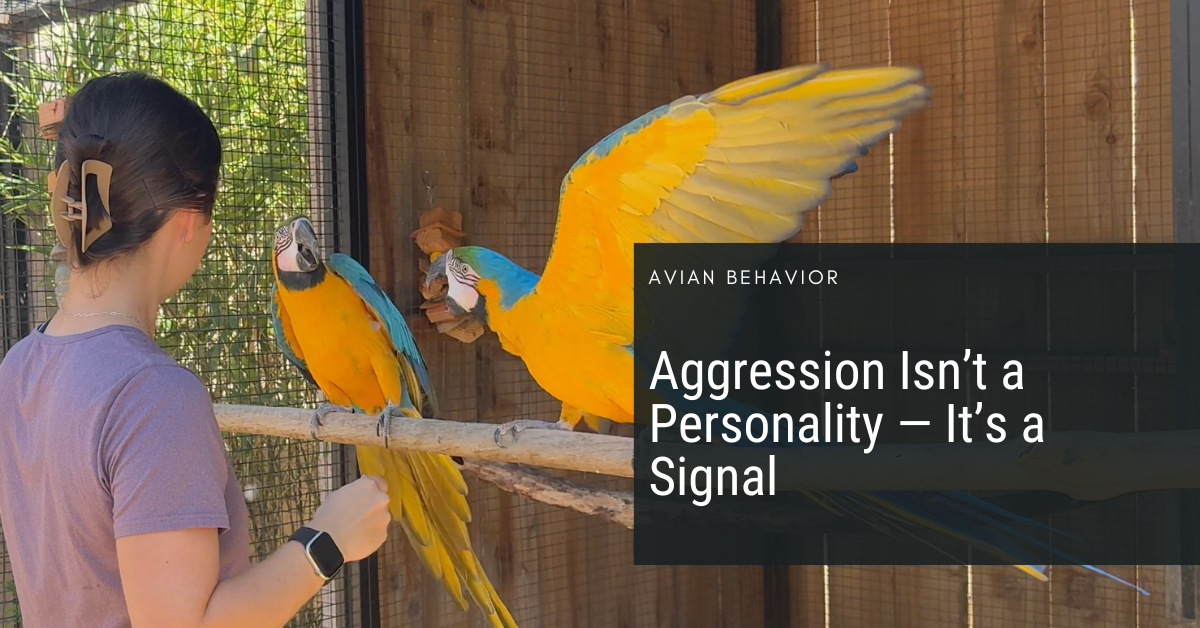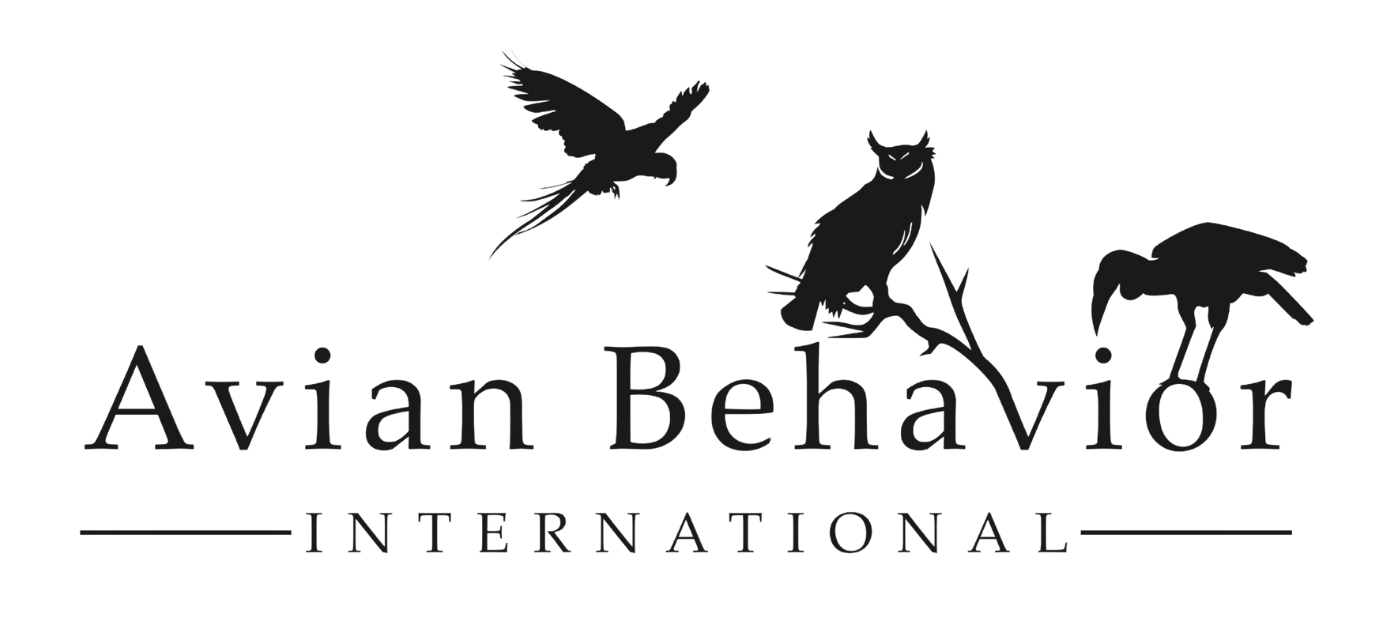
14 Aug Aggression Isn’t a Personality – It’s a Signal
When we see a bird lunge, bite, or shut down, it’s tempting to label them: moody, stubborn, bossy. It’s a habit most of us have fallen into at some point. But those labels stop us from asking the right questions.
Frustration isn’t a personality trait. It’s a predictable outcome when access to reinforcement is blocked, expectations aren’t met, or cues aren’t clear. In other words — it’s about contingencies, not character.
When we shift from “That bird is grumpy” to “What in the environment is reinforcing this?” we stop taking it personally and start seeing information we can work with.
Common Triggers of Frustration
Frustration doesn’t happen in a vacuum. In training, some of the most common causes include:
- Unclear cues or shifting expectations — Inconsistent body language, cue timing, or criteria can make it impossible for the bird to predict reinforcement.
- Thinning reinforcement too quickly — Success early on doesn’t mean the behavior is ready for a lean schedule. Move too fast and you risk escalation or shutdown.
- Overusing extinction without alternatives — Removing reinforcement for a behavior without reinforcing something else often produces an extinction burst.
- Reinforcer inconsistency — If the learner isn’t sure what earned the reinforcer, you’ll see guessing, chaining, and frantic behaviors.
Even offering more choice can be a trigger if it’s done too suddenly. Birds accustomed to highly structured environments may find a surge of freedom destabilizing until choice itself is taught with clarity and reinforcement.
Aggression Has a Function
Aggression isn’t random. It’s functional. It helps the bird get something or avoid something.
- Gain distance — Lunging to move a person or stimulus away.
- Interrupt interaction — A bite to stop what’s happening.
- Access a preferred outcome — A nip that results in a toy or food.
If it works, it gets repeated. If we only punish the aggression, we might suppress it temporarily, but we leave the underlying function untouched. The goal isn’t to “make it stop” — it’s to replace it with a more functional, mutually beneficial behavior.
Choice Reduces Frustration
Choice isn’t chaos. It’s structure that allows the bird to influence the environment in predictable ways.
- Offer opt-in/opt-out opportunities.
- Reinforce calm, functional behaviors before escalation.
- Maintain consistent patterns the learner can trust.
- Build tolerances gradually through reinforcement, not pressure.
- Shape more degrees of freedom: behaviors the bird can offer that will achieve the same value of reinforcement
The Weight of Reinforcement History
Every behavior we see has been reinforced at some point — sometimes intentionally, sometimes not. That history is why “just ignoring it” rarely works. The longer a behavior has been successful for the learner, the more we have to build something better to compete with it.
Repertoire Crowding
Think of the bird’s behavior repertoire as a pie. Aggression is just one slice. The way to make that slice smaller isn’t to erase it — it’s to fill the rest of the pie with functional, reinforcing skills: stationing, targeting, voluntary crating, shifting on cue.
These behaviors give the bird access to what it values while meeting your needs as a trainer. Over time, they crowd out the old patterns.
Want to dive deeper? Our new Fundamentals of Training is coming soon inside the Avian Behavior Lab. Join the Lab FREE for 2 weeks and you’ll get access to hundreds of hours of deep dive trainings and the number one bird training community online!

